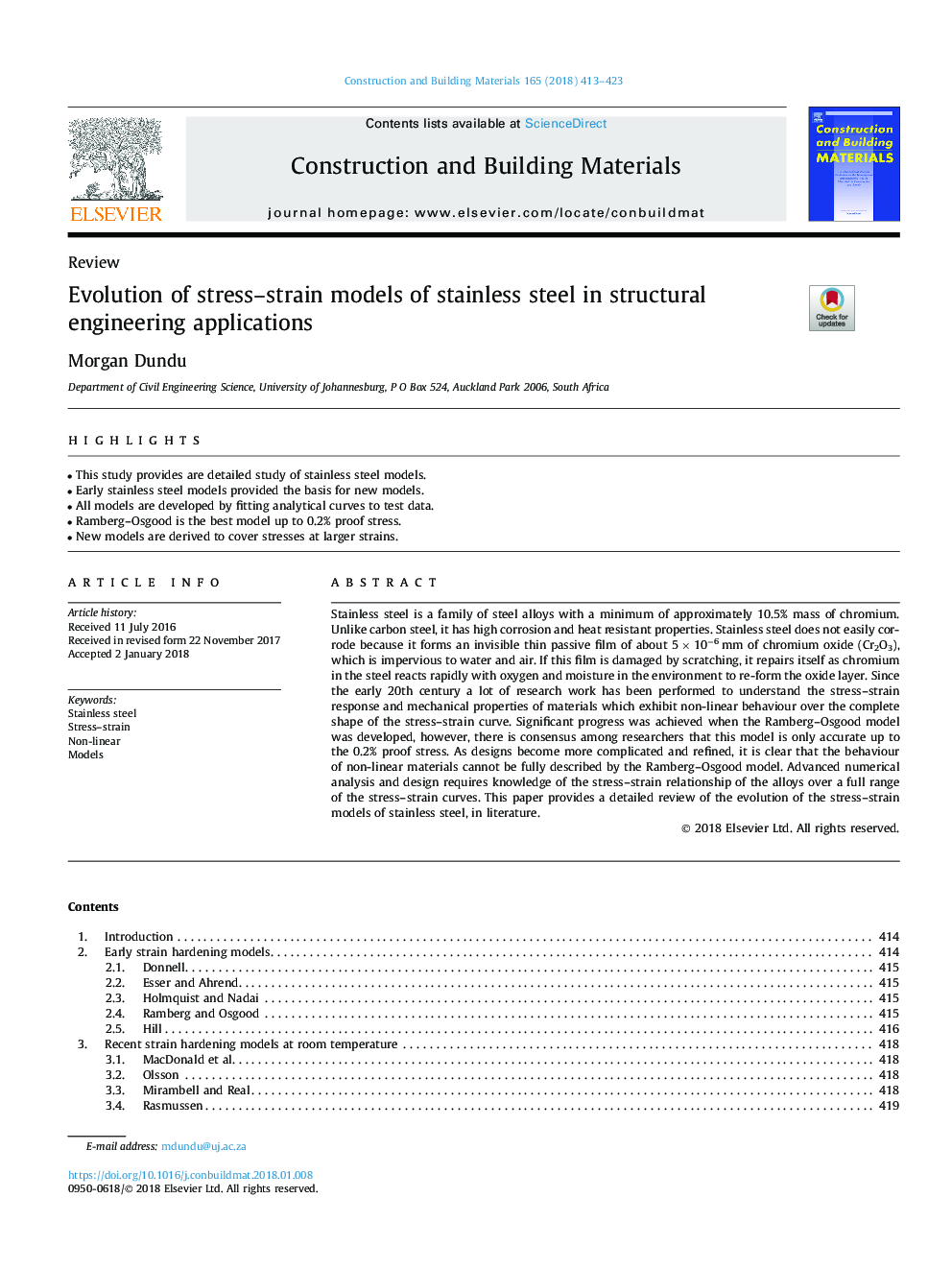| Article ID | Journal | Published Year | Pages | File Type |
|---|---|---|---|---|
| 6715512 | Construction and Building Materials | 2018 | 11 Pages |
Abstract
Stainless steel is a family of steel alloys with a minimum of approximately 10.5% mass of chromium. Unlike carbon steel, it has high corrosion and heat resistant properties. Stainless steel does not easily corrode because it forms an invisible thin passive film of about 5â¯Ãâ¯10â6â¯mm of chromium oxide (Cr2O3), which is impervious to water and air. If this film is damaged by scratching, it repairs itself as chromium in the steel reacts rapidly with oxygen and moisture in the environment to re-form the oxide layer. Since the early 20th century a lot of research work has been performed to understand the stress-strain response and mechanical properties of materials which exhibit non-linear behaviour over the complete shape of the stress-strain curve. Significant progress was achieved when the Ramberg-Osgood model was developed, however, there is consensus among researchers that this model is only accurate up to the 0.2% proof stress. As designs become more complicated and refined, it is clear that the behaviour of non-linear materials cannot be fully described by the Ramberg-Osgood model. Advanced numerical analysis and design requires knowledge of the stress-strain relationship of the alloys over a full range of the stress-strain curves. This paper provides a detailed review of the evolution of the stress-strain models of stainless steel, in literature.
Related Topics
Physical Sciences and Engineering
Engineering
Civil and Structural Engineering
Authors
Morgan Dundu,
